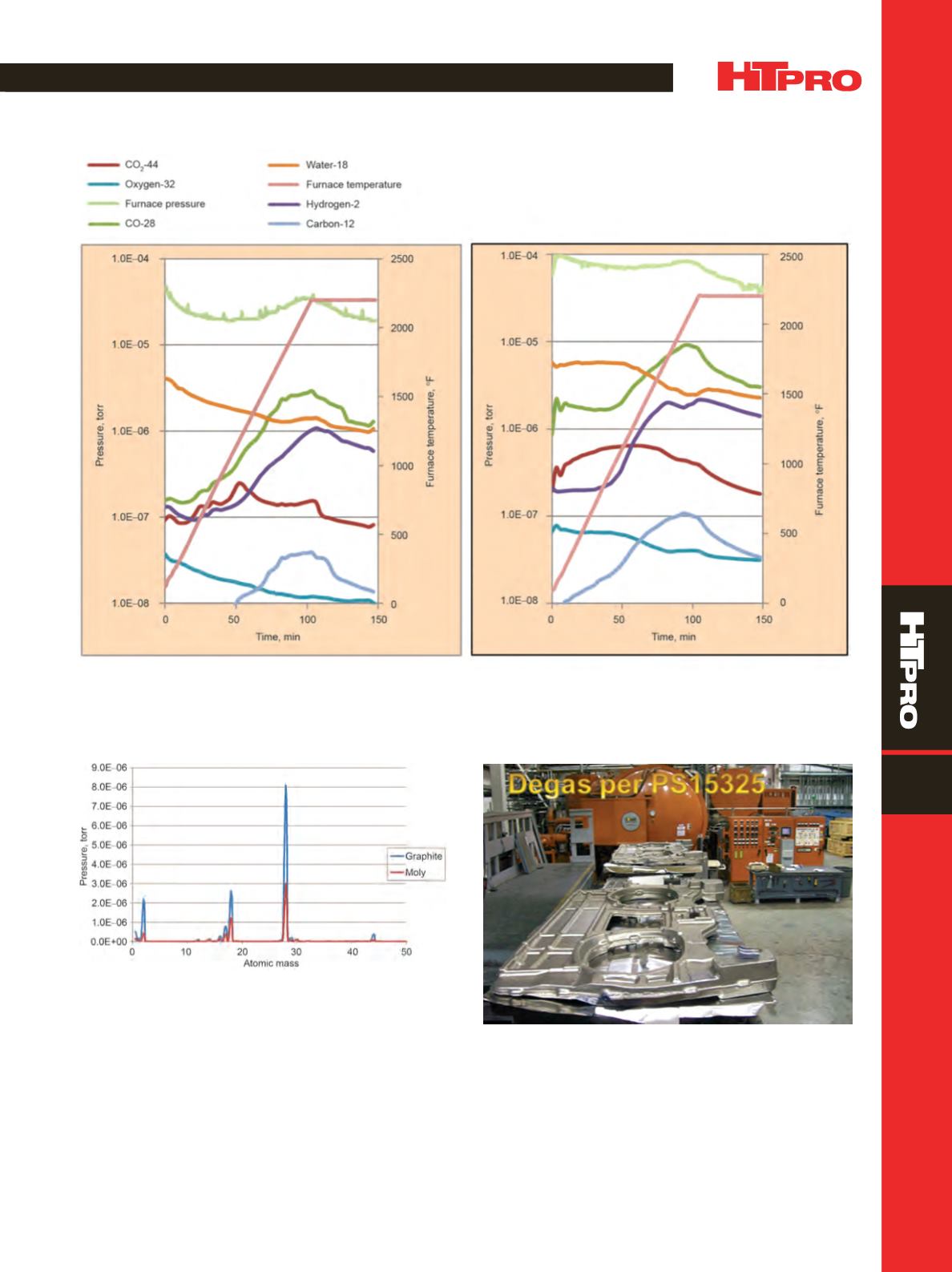

FEATURE
A D V A N C E D
M A T E R I A L S
&
P R O C E S S E S | J U N E
2 0 1 5
4 3
11
Fig. 11 —
Linear scale plot of residual gas analysis results in
graphite and all-metal (molybdenum) hot zones held at a tem-
perature of 2200
°
F. Water and air measurements are higher in the
graphite hot zone.
Fig. 12 —
Titaniumbulkhead forgings successfully processed in a
graphite insulated vacuum furnace to meet final stringent surface
contamination requirements.
Fig. 10 —
Residual gas trends as a function of vacuum and temperature in molybdenum hot zone (a) and graphite hot zone (b).
(a)
(b)
CONCLUSIONS
Water vapor is the dominant gas remaining in the vacu-
um systemat ambient temperature. Roughly 20% less water
vapor occurs in a molybdenum hot zone compared with a
graphite zone in ambient air. Carbonmonoxide begins to ex-
ceedwater vapor as the dominant gas above 1500°F. There is
50% less carbon monoxide in a molybdenum hot zone com-
pared to a graphite zone, with sources including H
2
0 reaction


















